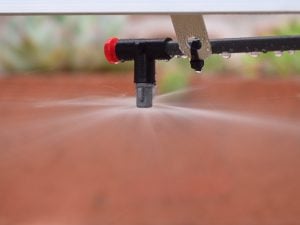A guide to growing begonia tubers in a greenhouse

A Guide to Growing Begonia Tubers in a Greenhouse
Begonias are beloved for their vibrant blooms and lush foliage, making them a popular choice among gardening enthusiasts. Growing begonia tubers in a greenhouse offers a controlled environment to help these beautiful plants thrive. Whether you’re a novice gardener or an experienced horticulturist, this guide will provide step-by-step instructions and tips for cultivating healthy begonia tubers in your greenhouse.
1. Understanding Begonia Tubers
Begonia tubers are the storage organs of tuberous begonias. These tubers act as energy reserves, allowing the plant to regrow each year. Tuberous begonias are prized for their stunning flowers, which come in a variety of colours, shapes, and sizes. They typically bloom from late spring to early fall, making them a delightful addition to any greenhouse collection.
Key Points About Begonia Tubers:
- They thrive in mild, humid conditions.
- They require well-draining soil to prevent rot.
- They can be dormant in winter and rejuvenated in spring.
2. Preparing Your Greenhouse
A greenhouse provides the ideal environment for growing begonia tubers, offering protection from harsh weather and pests. To create optimal growing conditions, consider the following:
Temperature Control
- Maintain a temperature of 65-75°F (18-24°C) during the day and no lower than 50°F (10°C) at night.
- Use a thermostat to monitor temperature fluctuations.
Humidity Levels
- Begonia tubers prefer a humid environment with levels around 50-70%.
- Use a misting system or place trays of water near the plants to maintain humidity.

Lighting
- Begonias require bright, indirect light to flourish.
- Install shade cloths or position the plants in areas of the greenhouse that receive filtered sunlight.
Ventilation
- Proper air circulation helps prevent fungal diseases.
- Use fans or open vents to ensure consistent airflow.
3. Selecting and Preparing Tubers
Choosing Healthy Tubers
- Purchase tubers from a reputable supplier to ensure quality.
- Look for firm, plump tubers without signs of mould or damage.
Pre-Sprouting Tubers
- In late winter or early spring, begin pre-sprouting the tubers to give them a head start.
- Place the tubers in shallow trays filled with moist peat moss or vermiculite, with the concave side facing up.
- Keep the trays in a warm, well-lit area with temperatures around 70°F (21°C).
- Water lightly to keep the medium moist but not soggy.
4. Planting the Begonia Tubers
Once the tubers have sprouted, they are ready to be planted in pots or directly into greenhouse beds.
Pot Selection
- Use pots with drainage holes to prevent waterlogging.
- Choose a pot that is 6-8 inches (15-20 cm) in diameter for each tuber.
Soil Preparation
- Use a well-draining potting mix, such as a blend of peat moss, perlite, and compost.
- Add a slow-release fertilizer to provide nutrients during the growing season.

Planting Steps
- Fill the pot with the prepared soil mix, leaving space for the tuber.
- Place the tuber with the sprouted side facing up.
- Cover the tuber lightly with 1-2 inches (2.5-5 cm) of soil.
- Water thoroughly to settle the soil, ensuring it is evenly moist but not saturated.
5. Caring for Your Begonias
Watering
- Keep the soil consistently moist but avoid overwatering, which can lead to root rot.
- Water at the base of the plant to prevent wetting the foliage.
Fertilizing
- Feed the plants with a balanced liquid fertilizer every two weeks during the growing season.
- Reduce fertilization as the plants approach dormancy.
Pruning and Maintenance
- Remove spent blooms and yellowing leaves to encourage new growth and maintain plant health.
- Stake tall varieties to support their heavy blooms.
6. Managing Pests and Diseases
Common pests and diseases can threaten your begonia tubers, but early intervention can prevent significant damage.
Pests to Watch For
- Aphids: Small, sap-sucking insects that cluster on new growth.
- Spider Mites: Tiny pests that create fine webbing on leaves.
- Mealybugs: White, cotton-like insects that feed on plant sap.
Disease Prevention
- Powdery Mildew: Prevent by ensuring good airflow and avoiding overhead watering.
- Botrytis Blight: Remove affected plant parts and use fungicides if necessary.
- Root Rot: Avoid overwatering and ensure proper drainage.
7. Preparing for Dormancy
As the growing season ends, begonia tubers enter a dormant phase. Proper care during this time is crucial for their survival.
Steps to Prepare for Dormancy
- Gradually reduce watering as the foliage begins to yellow and die back.
- Once the foliage is fully dry, trim it off close to the tuber.
- Carefully lift the tubers from the soil and remove excess dirt.
- Store the tubers in a cool, dry place (40-50°F or 4-10°C) in peat moss or paper bags.
- Check periodically for signs of rot or pests during storage.
8. Troubleshooting Common Begonia Issues
Poor Sprouting
- Check for signs of rot or dehydration in the tubers.
- Ensure proper temperature and humidity during pre-sprouting.
Leggy Growth
- Provide more light or reduce shading in the greenhouse.
- Pinch back the stems to encourage bushier growth.
Yellowing Leaves
- Monitor watering habits; overwatering or underwatering can cause yellowing.
- Check for nutrient deficiencies and adjust fertilization.
Conclusion
This guide to growing begonia tubers in a greenhouse can be a rewarding experience, offering a vibrant display of colour and beauty throughout the growing season. By following this guide, you can provide the ideal conditions for your begonias to thrive. From selecting healthy tubers to managing pests and preparing for dormancy, each step plays a vital role in ensuring your success. With a bit of care and attention, your greenhouse will be bursting with the stunning blooms of begonia tubers year after year.
